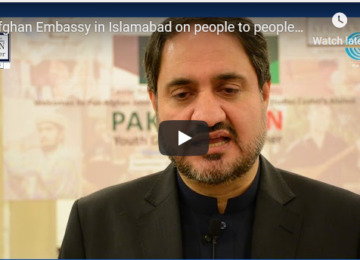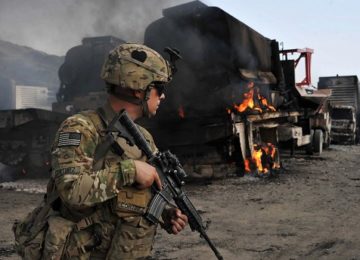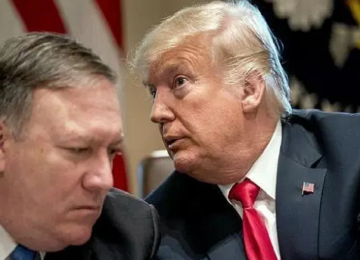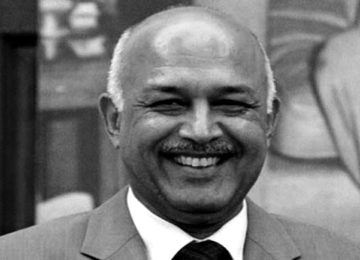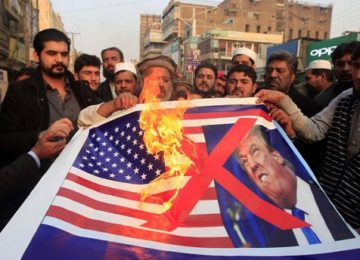After another brutal fighting season that saw the Taliban kill thousands of Afghan security forces, a top US general thinks local troops will soon seize the momentum.
General John Nicholson, who heads the US and NATO missions in Afghanistan, said a series of important changes in the 16-year-old war would align in 2018, enabling Afghan troops to strike out on the offensive.
His remarks came as officials tried to flesh out an increased NATO troop deployment to Afghanistan and looked to fill shortfalls in commitments from non-US members of the alliance.
America wants thousands more Western soldiers to help train Afghans, while freeing up US forces to support them during operations.
“The Afghans performed quite well from my perspective as the commander,” Nicholson said on the margins of a gathering of NATO defence ministers in Brussels this week.
“Even though there was some very tough fighting, the enemy was unable to accomplish any of their objectives,” he added, referring to the fact the Taliban did not seize any big cities.
Like a string of leaders before him in Afghanistan, Nicholson offered a generally upbeat assessment of the war, yet 2017 saw the Taliban kill thousands of Afghan troops.
NATO this week announced the alliance’s mission will grow from about 13,000 to some 16,000 next year, with the bulk of these troops coming from the US military.
US General Curtis Scaparrotti, commander of NATO forces in Europe, acknowledged that NATO members were unable to fill 100 percent of Nicholson’s requirements, though he noted discussions were ongoing with “more than a few nations”.
For Nicholson, a key task for non-US forces is boosting training to local police and soldiers, after what he said was a too-hasty drawdown of forces under former president Barack Obama.
“This is going to significantly change things on the battlefield next year,” he said.
American efforts to train Afghanistan’s security forces have been hampered by slapdash instruction and poor oversight, a US government watchdog has said.
In one case, a US officer tasked with training police had watched TV shows like “Cops” and “NCIS” to learn what he should teach, the office of the Special Inspector General for Afghanistan Reconstruction (SIGAR) stated.
“We have made it very clear to the allies that we really needed their help in filling these (training) billets,” Nicholson said.
President Donald Trump has granted US forces greater leeway to proactively strike the Taliban and the local affiliate of the Islamic State group.
Nicholson blasted Russia for building a “false narrative” there are thousands of IS fighters in Afghanistan to justify Moscow’s “assistance” to the Taliban, who hate IS.
He did not specify the nature of Russia’s help, and said there were “well less” than 1,000 IS fighters in Afghanistan.
Still, he acknowledged the jihadists’ ranks are being replenished by fighters coming from Pakistan.
The general also pointed to a doubling of the number of Afghan commandos, a new cadre of officers and a growing Afghan air force as positive indicators for next year.
How many Afghan soldiers have died in 2017 is unclear, as Washington last month agreed to classify data on the numbers.
Casualties among Afghan forces in the early part of this year were “shockingly high” as they struggled to beat back the resurgent Taliban and other militant groups, SIGAR has said previously.
They soared by 35 percent in 2016, with 6,800 soldiers and police killed, according to the watchdog.
But Nicholson said casualty rates actually went down in September when security forces increased their offensive missions.
“The point is, this army has fought well, they’ve taken heavy casualties, but they’ve demonstrated over the last three years… that they can take these hits and keep going,” he said.
This article originally appeared in The Daily Mail on November 10, 2017. Original link.




